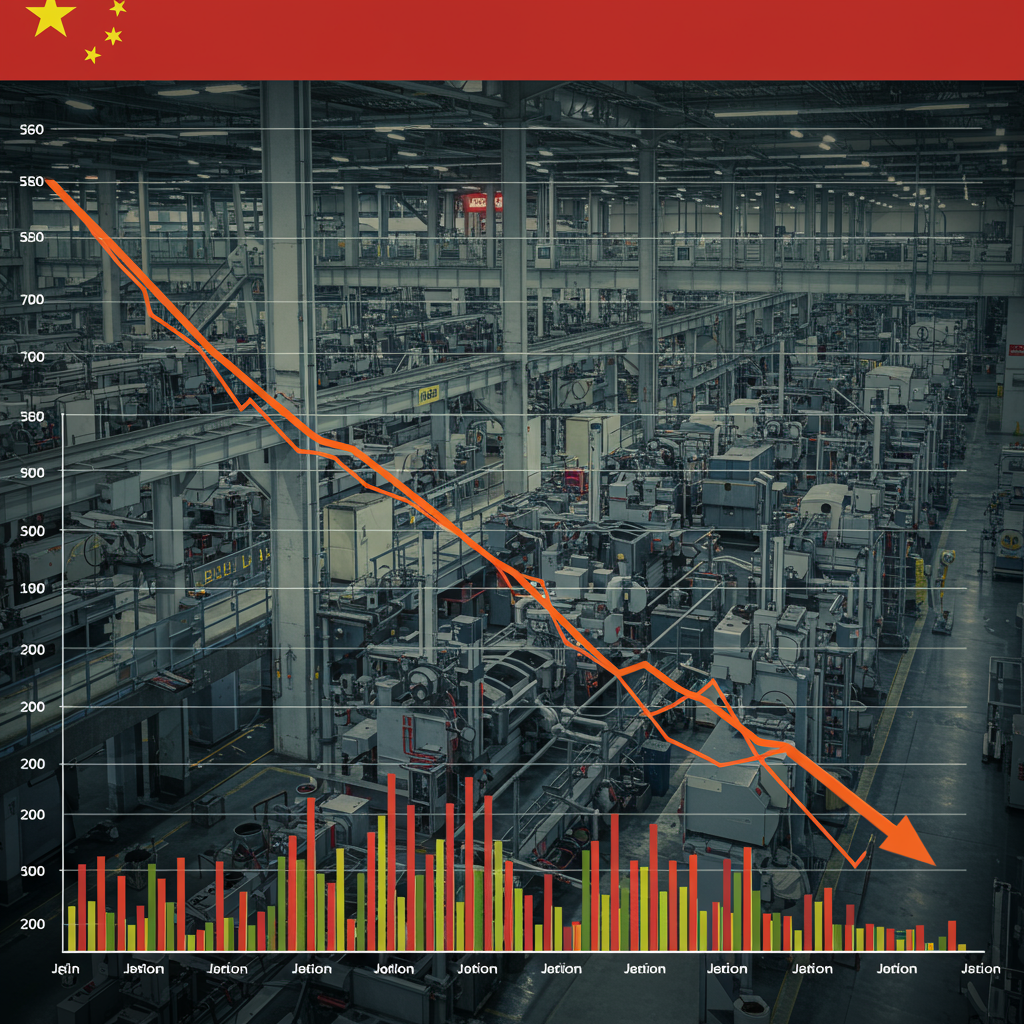U.S. stocks tumbled on Tuesday as investors reacted nervously to escalating tensions in the Middle East and digested disappointing U.S. retail sales data. The combination of geopolitical uncertainty and signs of a weakening economy weighed heavily on major indices.
The broad S&P 500 index finished the session lower, shedding 0.6%. The tech-heavy Nasdaq Composite also declined by 0.7%, while the Dow Jones Industrial Average lost 220 points, marking a 0.5% dip.
Geopolitical Jitters Fuel Market Anxiety
A significant factor driving market sentiment was the worsening conflict between Israel and Iran. The fifth day of strikes highlighted the escalating nature of the situation in the Middle East.
President Donald Trump added to the geopolitical uncertainty through a series of posts on Truth Social. He issued strong demands and threats towards Iran and its leader, Ali Khamenei. In one notable post, Trump demanded “UNCONDITIONAL SURRENDER!” and claimed the U.S. had “complete and total control of the skies over Iran.” He added, “We know exactly where the so-called ‘Supreme Leader’ is hiding… He is an easy target, but is safe there – We are not going to take him out (kill!), at least not for now. But we don’t want missiles shot at civilians, or American soldiers. Our patience is wearing thin.”
Earlier, Trump had advised “Everyone should immediately evacuate Tehran.” His abrupt early departure from the G7 summit, which he stated was linked to the Middle East crisis and unrelated to a potential ceasefire offer mentioned by French President Emmanuel Macron, left investors seeking clarity on the unfolding situation. “We’re all in a bit of a limbo,” commented Deutsche Bank strategist Jim Reid regarding the summit outcome and Trump’s actions.
Rising tensions in the region spurred a rally in oil prices. Both West Texas Intermediate and Brent crude futures advanced by about 3%, reversing declines seen Monday when signs had emerged suggesting Iran might seek a ceasefire.
Weak Retail Sales Signal Economic Slowdown
Adding to market pressure was weaker-than-expected U.S. retail sales data for May. Consumer spending retreated more significantly than forecast, falling 0.9% on the month. This contrasted sharply with the Dow Jones forecast which anticipated only a 0.6% decline. Even excluding auto sales, retail activity still dipped by 0.3%, missing the consensus estimate for a 0.1% gain.
Economists pointed to the data as evidence of a slowing economy and cautious consumers. “The economy is slowing with consumers nervous about exactly what lies ahead and are choosing to save overall rather than flash some cash at the shops and malls,” said Chris Rupkey, chief economist at Fwdbonds.
Anticipating the Federal Reserve’s Move
The disappointing retail sales report arrived just ahead of the Federal Reserve’s highly anticipated policy meeting, which is expected to conclude later in the week. The central bank is widely projected to hold interest rates steady at this meeting.
However, some analysts believe the weaker economic data could influence the Fed’s tone. Ross Mayfield, an investment strategist at Baird, suggested that while it might be “too late” for the retail sales data to change the immediate rate decision, the report could provide the Fed with justification for adopting a more dovish stance in its language. “I definitely think that you want to see some dovish language acknowledge the economy cooling,” Mayfield told CNBC.
Looking further out, the CME Group’s FedWatch tool indicated markets were pricing in two quarter-percentage-point rate cuts by the end of the year, with the first anticipated at the September meeting. Jurrien Timmer, director of global macro at Fidelity Investments, offered a different perspective, arguing that what happens at the long end of the bond yield curve – which the Fed doesn’t directly control – is becoming increasingly important for the economy compared to the Fed’s short-term rate decisions.
Sector and Stock Performance Highlights
While the broader market declined, several sectors and individual stocks saw notable movements:
Energy Stocks Gain: Supported by rising oil prices due to Middle East tensions, the energy sector was the only S&P 500 sector to register an advance midday, climbing 1.3%. Valero Energy led the gains, up 2.6%, while Chevron and Hess each rose 2%.
Solar Stocks Plummet: In contrast, solar energy companies saw significant losses. Shares plunged pre-market following reports that the U.S. Senate’s version of President Trump’s budget bill included provisions to phase out tax incentives for solar and wind power by 2028. Sunrun plummeted over 35%, SolarEdge Technologies declined more than 29%, Enphase Energy fell over 20%, and First Solar dropped nearly 17%. While still negative, a Raymond James analyst noted the Senate proposal was an improvement over the House version, which had represented a “worst-case scenario” for renewable energy incentives.
Defense Stocks Tick Up: Geopolitical risk provided a lift to defense stocks, which saw slight gains in pre-market trading. Lockheed Martin and Northrop Grumman each added about 1%.
Tech Valuation Concerns: David Bianco, investing chief at DWS Group, advised investors to consider alternatives to high-valuation technology stocks, suggesting areas like utilities (for pricing power) and healthcare (for growth potential) could offer better protection of gains.
- Individual Movers: Wells Fargo analysts issued a bearish note on Tesla, citing struggling delivery metrics and warning of potential negative free cash flow in 2025 and delays for its robotaxi plans. They highlighted the stock’s high valuation despite negative growth prospects. Tesla shares dipped in pre-market trading. On the other hand, eight stocks in the S&P 500 hit new 52-week highs Tuesday, with all but one reaching fresh all-time highs. Conversely, PG&E and Brown-Forman reached new 52-week lows.
- sports.yahoo.com
- www.latimes.com
- www.henryfuneralhome.net
- www.si.com
- www.cbsnews.com
Global Markets and Other Assets
The cautious sentiment extended globally. Asia-Pacific markets saw mixed trading Tuesday, while major European indices posted declines, with the pan-European Stoxx 600 hitting a three-week low. Germany’s DAX led regional losses. The Bank of Japan held its key interest rate steady but signaled a plan to slow the pace of government bond purchases starting next April. A newly announced trade deal between the UK and U.S. had limited impact on the FTSE 100, as benefits were largely priced in.
In other market news, silver futures climbed to $37.33, reaching their highest level since February 2012. Demand for silver has risen partly due to its increasing use in green energy and technology innovations.
Analysts continued to monitor broader market trends. JPMorgan managing director Jason Hunter suggested that while recent market rebounds might consolidate, any “early-summer price weakness” could present buying opportunities, though the risk of a more prolonged downturn increases later in the year. Northwestern Mutual’s Brent Schutte cautioned investors about potentially underestimating the impact of President Trump’s tariffs, which the administration views as a key tool in its economic strategy.



